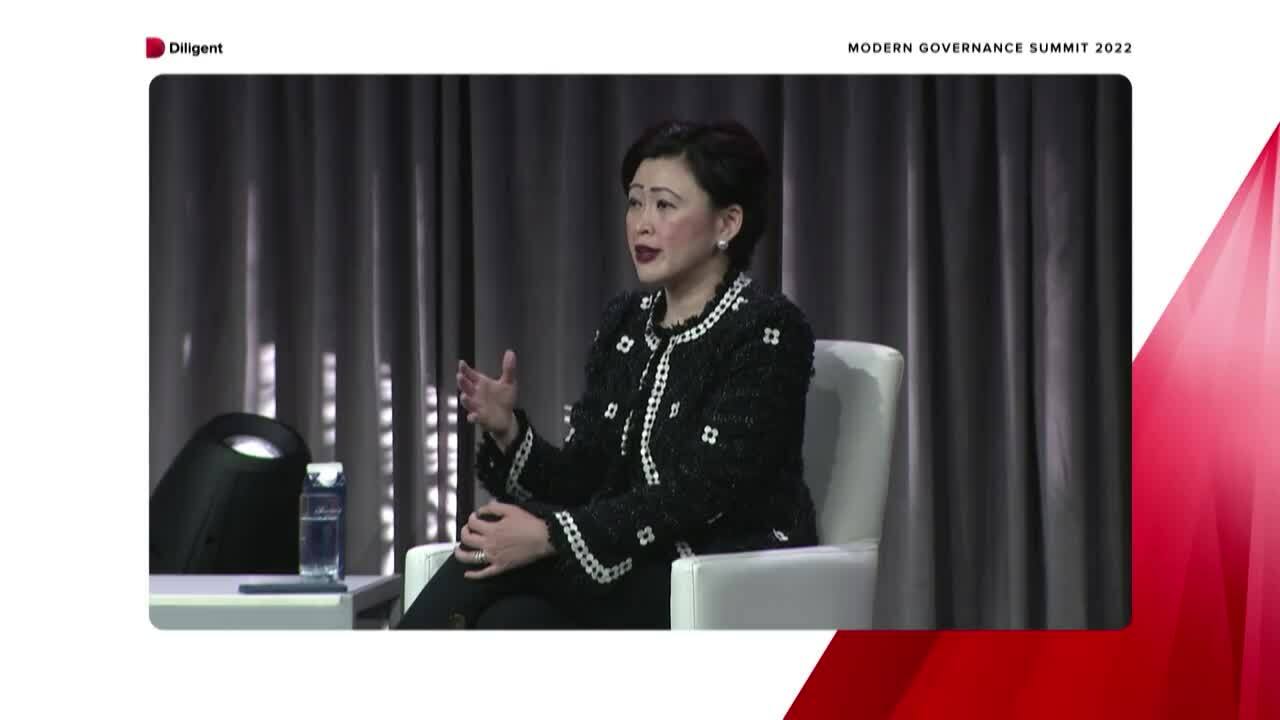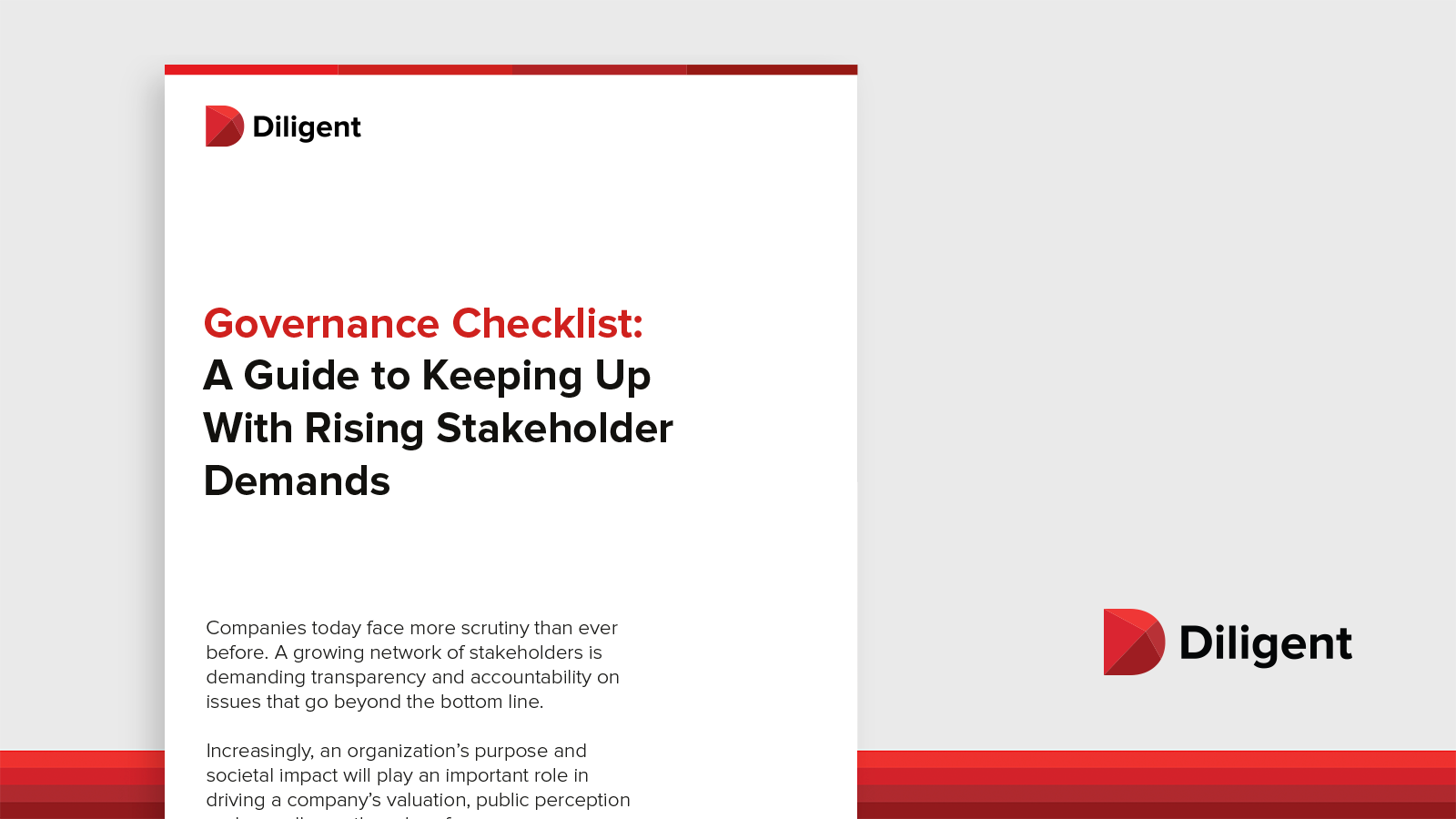Boards & Governance
Exploring the intersection between governance, purpose and technology
Transform How Boards and Leaders Work Together
Meeting & Agenda Management
Seamlessly create, update and share agendas and board meeting materials.
Director Preparation
Access resources, view upcoming meetings and annotate board materials from any device.
Minutes & Actions
Easily capture minutes and actions during a meeting. Assign contributors and set automated prompts.
Signature & Resolutions
Send documents for approval integrated with DocuSign.
Virtual Data Rooms
Share and collaborate on documents with stakeholders in a secure room.
Secure Messaging
Have private conversations on a dedicated channel integrated for easy access.
Questionnaires
Complete self evaluations or D&O questionnaires in the same place as the boards material.
Director
Get new directors up to speed with the resources they need in one location.
Composition Planning
Identify gaps in board composition and recruit from a pool of 250,000 board members.
The Role of Technology in Enabling Purpose-Driven Governance

MGS explored how technology functions as a foundational component of purpose-driven governance. Indeed, as Dolby Enterprises Board Member Emily Rollins observed in the same keynote session, “There are so many things that can be accomplished with technology that were never possible before.” When it comes to the urgent issues driving governance decisions, such as ESG, cybersecurity and executive compensation, technology empowers boards and governance professionals to turn best practices into standard operating procedure.
Good governance is fundamental to effective leadership, and organizations will struggle to thrive if leadership’s approach to governance is not aligned to the organization’s mission and values. The intersection between governance, purpose and technology plays out in these areas:
- Aligning purpose and performance. To maintain shareholder and stakeholder support, leadership must balance ESG goals and ensure they’re aligned with issues including executive compensation planning.
- Streamlining and securing collaboration. Without clear and secure lines of communication for leaders, information critical to decision-making can become siloed or obscured, hampering organizations’ ability to thrive.
- Navigating perception and board impact. Anticipating stakeholder activism and maintaining a positive public image is paramount for boards today. They need tools that monitor and deliver insights into market conditions, stakeholder sentiment and public perception.
- Delivering visibility from across the organization. To effectively make the right decisions, leaders must be equipped with the right data, surfaced to them when they need it and in at-a-glance dashboards that speak their language.
- Measurable ROI. Before adopting any governance technology solution, businesses need a thorough cost-benefit analysis to bring to stakeholders.


As Dr. Sudheendhra Putty, Associate Vice President & Company Secretary at Cyient Limited, said at MGS: “Information is really the key in today’s world,” adding that the corporate secretary’s critical role is to sift through data and “provide the right information to facilitate decision making.”
Governance professionals can leverage robust tools for better reporting, tracking and overall visibility and gain more insight into key issues. In turn, they're able to create a more productive, informed dialogue with the board on decisions and concerns.
Technologies like Diligent Entities, which brings 318% ROI for users over three years, can equip governance professionals to accelerate productivity and focus communications on the items that matter most.
Navigating the shift to hybrid and remote work has been a challenge for many governance teams, but it’s a quest they’ve been aided in by leveraging the right technology. For many, the pandemic acted as the catalyst for positive change.
Courtney Kamlet, VP, Group General Counsel and Corporate Secretary of Vontier Corporation, noted that, “When the need to pivot away from in-person [meetings] began, it became more important to implement technology.” She also pointed out how the role of technology has changed exponentially in the past two years, with some 75% of public companies using digital board books today in contrast to the predominant reliance on physical board books just a decade ago.
With key technologies like Diligent Board & Leadership Collaboration saving up to 1,600 hours on board and committee material collection, the move to digital transformation accelerates efficiency, accuracy and usability. Additionally, general counsels and corporate secretaries can leverage technology to gain insight into key areas including ESG perception monitoring, executive compensation and risk intelligence data integration.


Don’t just look at what the market is doing — you need to think about what is happening with your strategy.
— Shai Ganu, Managing Director of Willis Towers Watson
-
As shareholder opposition to what is often perceived as excessive executive compensation continues to be a hot topic, governance technology can enhance a board’s visibility into market conditions, provide key data, drive time and cost savings, and prioritize ESG goals that are aligned to shareholder expectations. Technology purpose-built for compiling and measuring ESG data offers key capabilities for driving performance and meeting objectives, with Diligent ESG offering 167% ROI.
Being purpose-driven isn’t about having a mission statement to change the world. It’s about your company understanding the right values and culture.
— Dr. Sonita Lontoh, Board Member of Sunrun, Inc. and TrueBlue, Inc.
-
As Shellie Gustafson, Chief People and Inclusion Officer at Jacobs, observed, “Your culture sets the tone for who you are” as a company and is something that any potential hires will be looking at very closely. Ultimately, a strong company culture can mean the difference when it comes to hiring the right talent in an extremely competitive market.
Facebook Whistleblower Frances Haugen said at MGS that, while culture is often driven from the top, it should be built from the bottom up. “When people feel like they have to hide things,” she said, “it’s a load they have to carry every day.” Haugen noted that a flawed corporate culture that demands this of its employees can lead to a range of retention issues and personnel challenges. Kristy Grant-Hart, CEO of Spark Compliance Consulting, agreed. “People will leave if they don’t feel the company is values-driven or if there is a toxic culture,” she said.
Ultimately, as Lontoh said, “Being purpose-driven isn’t about having a mission statement to change the world. It’s about your company understanding the right values and culture.” Boards and leaders need to work together as stewards of key values for their stakeholders and their employees. “It’s not the board’s job alone to set the culture,” Lontoh said, “but it is their job to monitor it.”





